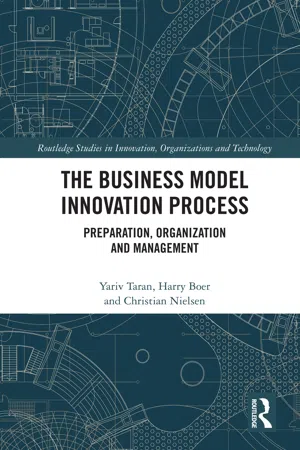Business
Structural Models
Structural models in business refer to frameworks or representations used to analyze and understand the organizational structure, processes, and relationships within a company. These models help to identify key components, such as roles, responsibilities, and communication channels, and can be used to optimize operations, improve decision-making, and drive organizational change.
Written by Perlego with AI-assistance
Related key terms
3 Key excerpts on "Structural Models"
- eBook - ePub
- Michael Connolly, David H. Eddy-Spicer, Chris James, Sharon D. Kruse, Michael Connolly, David H. Eddy-Spicer, Chris James, Sharon D. Kruse(Authors)
- 2018(Publication Date)
- SAGE Publications Ltd(Publisher)
8 Structural Perspectives on Schools as Organizations Scott C. Bauer and S. David BrazerIntroduction
Being scholars, readers likely remember what it felt like being picked last for the kickball team at recess. This sensation explains our first reactions when the editors of this volume asked us if we would be interested in contributing a chapter on Structural Models. Structural Models are the dregs of organization theory, the uncoordinated non-athlete who must be allowed to play, the example of what not to do. They are barely tolerated in organization theory discussions, believed to be passé, overly simplistic, unsophisticated and generally limited in helping to describe, explain and predict important phenomena in organizational life. Structural analysis seems to belong to a bygone era, a time when functionalist models were helpful in explaining something of what was going on in organizations as societies moved from an agrarian into an industrial age, but ill-suited, at best, for twenty-first century thought on what makes organizations tick. What do these models have to offer us today? Quite a bit, actually.The term ‘structure’ refers to the form of the organization. As Pugh (1997, p. 1) explained: ‘All organizations have to make provision for continuing activities directed toward the achievement of given aims. Regularities in activities such as task allocation, coordination and supervision are established which constitute the organization's structure.’ Bush (1997, p. 42) describes it this way: ‘Structure refers to the formal pattern of relationships between people in organizations. It expresses the ways in which individuals relate to each other in order to achieve organizational objectives.’ Rules, policies and procedures that define how actors work, who has authority and over what they have authority, how work is controlled and participants are held accountable, and how individuals and groups are arranged vertically (hierarchy) and laterally (departmentalization) are all indicators of structure. In fact, for a field such as organization theory, in which there is little consensus about much of anything, it is a bit astounding that there is so much agreement about what organization structure means - eBook - ePub
- Jeffrey R. Bohn, Roger M. Stein(Authors)
- 2009(Publication Date)
- Wiley(Publisher)
Structural Models provide a framework for sorting out the source of outlier behavior and a means for understanding at an economically sensible level the drivers of risk for both individual exposures and the portfolio. Data-related problems are rife in the processes associated with managing a credit portfolio. Use of a framework not grounded in economics (i.e., beyond a set of statistical relationships) makes it more likely that data errors may lead portfolio managers astray. ACPM groups benefit greatly from the analytical firepower housed in a causal framework. 39 Structural Models offer elegant descriptions of firm behavior and default and have shown themselves, given appropriate practical modifications, to perform well for default prediction and valuation (when good market prices are available to compare). In times of market turmoil, structural-model-based values will likely differ substantially from observed market prices; however, these models can continue to provide some guidance as to where prices may return once the turmoil abates. That said, a structural model may not be appropriate for certain pricing applications in difficult and illiquid markets as the model values will tend to diverge too much from observed prices. As is often the case, model choice depends on the objective of the manager or trader using the model. All equal, though, the ability to diagnose the drivers of the model in an intuitive, economic context is a key advantage of Structural Models. CHANGING DEFINITIONS OF STRUCTURAL AND REDUCED-FORM In the world of 1970s finance, the adjective structural was sometimes used to describe economic models that exhibited an empirical track record of parameter stability - eBook - ePub
The Business Model Innovation Process
Preparation, Organization and Management
- Yariv Taran, Harry Boer, Christian Nielsen(Authors)
- 2021(Publication Date)
- Routledge(Publisher)
“A conceptual framework for identifying how a company creates, delivers, and extracts value. It typically includes a whole set of integrated components, all of which can be looked on as opportunities for innovation and competitive advantage”.Similarly, there are many different opinions about the components constituting a generic business model, which are also referred in the literature as “building blocks” or “value drivers”. The number of components proposed in the literature ranges from three to nine.47A deeper look into these definitions suggests that some authors take a narrow, more technological or financial focus,48 while others adopt a more general perspective.49 Some authors incorporate corporate strategy in their business model definition,50 while others leave it out.51 Clearly, such a lack of common language and content is problematic, because it creates dispersion and prevents cumulative research and convergence of perspectives in the business model research area.521.6 Modeling
Developing a business model is, as the word suggests, a modeling exercise. A real system, i.e., the real world or even a minute part of it, is simply too complex to comprehend in its entirety. Focusing on just a few elements and relationships, the purpose of modeling is to make the real system, for example a company or a network of companies, easier to understand by making and, then, analyzing a model, i.e., a much-reduced representation, of that real system. The analysis may take many forms, ranging from visual inspection of a qualitative model to simulation using a mathematical model.Figure 1.1 Real system, problem, and model relationsModeling is done for the purpose of solving an existing or expected problem. The problem affects what elements and relationships are taken into the model, the boundaries of the model, the level of abstraction, and the type of model (Figure 1.1
Index pages curate the most relevant extracts from our library of academic textbooks. They’ve been created using an in-house natural language model (NLM), each adding context and meaning to key research topics.


